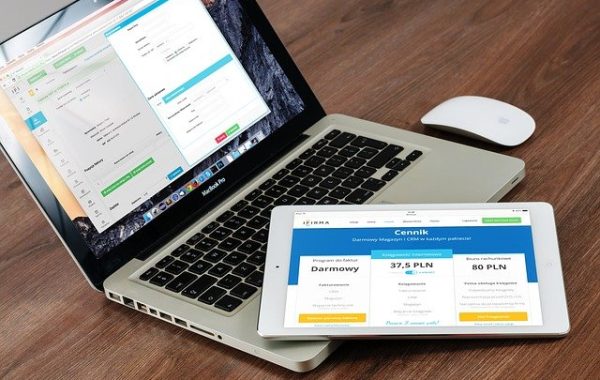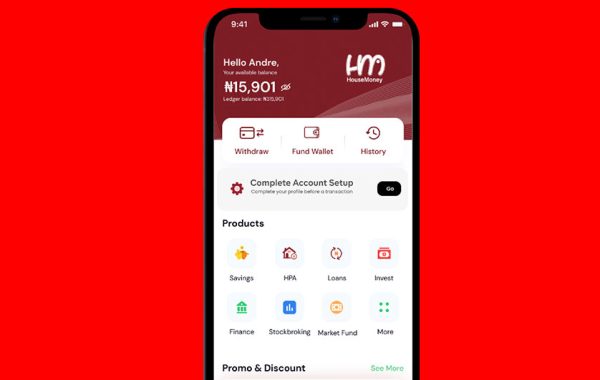Estimated reading time: 21 minutes
Web Design How To Steps
How to Kickstart Your Website Design
-
Define Your Target Audience
Identify the demographics, interests, and behaviors of your intended audience to tailor your design accordingly.
-
Craft a Unique Value Proposition
Clearly communicate what sets your website apart and why visitors should engage with it.
-
Conduct Competitive Analysis
Research competitors’ websites to identify design trends, strengths, and areas for improvement.
-
Establish Clear Goals
Define specific objectives for your website, such as lead generation, sales, or brand awareness.
-
Create a Mood Board
Gather visual inspiration, including color schemes, typography, and imagery, to guide your design choices.
How to Craft a Unique Website Identity
-
Define Brand Elements
Establish brand elements such as logos, color schemes, and fonts that reflect your brand identity.
-
Create Consistent Branding
Ensure uniformity in branding across all website elements to build a cohesive and recognizable brand image.
-
Tell Your Brand Story
Craft a compelling narrative that communicates your brand’s history, mission, and values.
-
Choose Engaging Imagery
Select high-quality images that resonate with your brand and evoke the desired emotional response.
-
Integrate Branding in UI/UX
Incorporate brand elements seamlessly into the user interface and experience for a consistent brand presence.
How to Structure Your Website for Success
-
Create a User-Friendly Navigation
Design an intuitive navigation menu that allows users to easily find information on your website.
-
Plan a Logical Information Architecture
Organize content in a hierarchical structure to enhance user understanding and engagement.
-
Implement Responsive Design
Ensure your website adapts seamlessly to various devices and screen sizes.
-
Integrate Effective Call-to-Action (CTA)
Strategically place CTAs to guide users toward desired actions such as sign-ups or purchases.
-
Optimize Page Load Speed
Compress images, minimize code, and leverage caching to improve website loading times.
How to Optimize Website Design
-
Ensure Cross-Browser Compatibility
Test your website on different browsers to ensure a consistent experience for all users.
-
Apply SEO Best Practices
Optimize meta tags, headers, and content for search engines to improve your website’s visibility.
-
Implement Schema Markup
Use structured data to enhance search engine understanding of your website content.
-
Incorporate Social Media Integration
Add social media buttons and feeds to encourage user engagement and sharing.
-
Optimize Images for Web
Compress and format images properly to reduce file sizes without compromising quality.
How to Enhance User Experience
-
Prioritize Accessibility
Ensure your website is accessible to users with disabilities by following accessibility standards.
-
Optimize for Mobile Devices
Design with a mobile-first approach to cater to users accessing your site on smartphones and tablets.
-
Implement Intuitive Forms
Create user-friendly forms with clear instructions and validation messages.
-
Optimize User Flow
Ensure a logical flow through your website, guiding users from entry points to conversion.
-
Personalize User Experience
Leverage user data to provide personalized content and recommendations.
How to Design Engaging Website Content
-
Craft Compelling Headlines
Create attention-grabbing headlines that entice visitors to explore your content further.
-
Write Clear and Concise Copy
Communicate your message concisely, using clear and engaging language.
-
Utilize High-Quality Imagery
Incorporate visually appealing images that complement your content and resonate with your audience.
-
Implement Readable Typography
Choose readable fonts and maintain a consistent typography style throughout your website.
-
Structure Content Effectively
Use headings, subheadings, and bullet points to organize content for easy consumption.
How to Enhance Website Interactivity
-
Incorporate Interactive Elements
Add features like sliders, accordions, or interactive forms to engage visitors.
-
Integrate Social Media Feeds
Embed live social media feeds to encourage user interaction and social sharing.
-
Create Engaging Calls-to-Action (CTAs)
Design visually appealing CTAs that prompt users to take specific actions.
-
Utilize Parallax Scrolling
Incorporate parallax effects to add depth and visual interest to your website.
-
Implement Smooth Transitions
Ensure smooth and seamless transitions between pages and elements for a polished user experience.
How to Test and Optimize Your Website
-
Conduct Usability Testing
Gather feedback from real users to identify areas for improvement in user experience.
-
Perform A/B Testing
Test variations of design elements to determine which performs better in achieving your goals.
-
Monitor Website Analytics
Use tools like Google Analytics to track user behavior and gain insights into your website’s performance.
-
Optimize for Conversions
Analyze user pathways and make adjustments to maximize the conversion rate of your website.
-
Implement SEO Audits
Regularly audit and optimize your website’s SEO to improve search engine rankings.
How to Launch Your Website Successfully
-
Set Up Website Hosting
Choose a reliable hosting provider and configure your website for optimal performance.
-
Register a Domain Name
Select a domain name that aligns with your brand and register it through a domain registrar.
-
Ensure Legal Compliance
Review and comply with legal requirements, such as privacy policies and terms of service.
- Configure SSL Encryption
How to Maintain and Improve Your Website
-
Regularly Update Content
Keep your website fresh by updating content, blog posts, and other relevant information regularly.
-
Monitor Website Security
Implement security measures, update plugins, and perform regular security audits to protect against vulnerabilities.
-
Gather User Feedback
Create feedback forms or surveys to collect user insights and improve the overall user experience.
-
Implement Latest Design Trends
Stay informed about current design trends and consider periodic updates to keep your website visually appealing.
-
Optimize for New Technologies
Adopt and optimize your website for emerging technologies such as voice search or virtual/augmented reality.
How to Troubleshoot Common Website Issues
-
Check Browser Compatibility
Ensure your website functions correctly on different browsers to prevent user experience issues.
-
Verify Mobile Responsiveness
Confirm that your website displays properly on various mobile devices to cater to a diverse audience.
-
Debug Broken Links
Regularly check for broken links and fix them to maintain a seamless user experience.
-
Optimize Images for Web
Ensure images are optimized for the web to improve page load times and overall performance.
-
Review Server Performance
Monitor server performance and address any issues affecting website speed and reliability.
How to Improve Website Performance
-
Optimize CSS and JavaScript
Minify and compress CSS and JavaScript files to reduce page load times.
-
Enable Browser Caching
Leverage browser caching to store static files locally and speed up subsequent visits.
-
Utilize Content Delivery Networks (CDNs)
Distribute your website’s assets across global servers to reduce latency and improve load times.
-
Optimize Database Performance
Regularly clean up and optimize your website’s database for improved efficiency.
-
Implement Lazy Loading
Load images and other media only when they come into the user’s viewport, improving initial page load times.
How to Enhance Website Security
-
Install SSL Certificate
Secure your website by encrypting data transmission with an SSL certificate.
-
Regularly Update Plugins and Themes
Keep all plugins and themes up to date to patch security vulnerabilities.
-
Use Strong Passwords
Ensure that all user accounts, especially admin accounts, have strong and unique passwords.
-
Implement Two-Factor Authentication (2FA)
Add an extra layer of security by requiring users to verify their identity through 2FA.
-
Regularly Backup Your Website
Schedule automated backups to ensure data recovery in case of security incidents.
How to Engage Users with Multimedia
-
Embed Engaging Videos
Incorporate videos to showcase products, share tutorials, or provide entertaining content.
-
Create Interactive Infographics
Design infographics that visually present information and engage users.
-
Integrate Image Galleries
Display portfolios or product collections using interactive image galleries.
-
Utilize Audio Content
Include audio elements, such as podcasts or background music, to enhance user experience.
-
Implement Virtual Tours
Offer virtual tours or 360-degree views for real estate, travel, or experiential websites.
How to Leverage Social Media for Your Website
-
Integrate Social Sharing Buttons
Make it easy for users to share your content by including social media sharing buttons.
-
Automate Social Media Posting
Use scheduling tools to automate regular posting on your social media channels.
-
Create Engaging Social Media Graphics
Design eye-catching graphics tailored for each social media platform to boost engagement.
-
Run Social Media Contests
Organize contests or giveaways to encourage user participation and increase brand awareness.
-
Engage with Your Audience
Respond to comments, messages, and mentions to build a community around your brand.
How to Optimize Your Website for E-Commerce
-
Streamline Checkout Process
Simplify the checkout steps to reduce friction and improve the overall shopping experience.
-
Implement Product Recommendations
Utilize recommendation algorithms to suggest related products and increase cross-selling.
-
Optimize Product Pages
Craft compelling product descriptions, high-quality images, and clear calls-to-action on product pages.
-
Integrate Secure Payment Gateways
Choose reliable and secure payment gateways to build trust with customers during transactions.
-
Enable User Account Management
Allow users to create accounts, track orders, and manage their preferences for a personalized experience.
How to Optimize Website for Local SEO
-
Claim and Optimize Google My Business
Ensure accurate business information, opening hours, and photos on your Google My Business profile.
-
Localize Content
Tailor content to include local keywords, events, and references relevant to your target audience.
-
Encourage Customer Reviews
Prompt satisfied customers to leave positive reviews on platforms like Google and Yelp.
-
Local Link Building
Build relationships with local businesses and organizations to gain relevant backlinks.
-
Optimize for “Near Me” Searches
Include location-based keywords to capture searches with local intent.
How to Create an Effective Blog for Your Website
-
Define Blogging Goals
Clarify the purpose of your blog, whether it’s to educate, entertain, or drive traffic to your website.
-
Develop a Content Calendar
Plan a consistent publishing schedule to keep your audience engaged and attract new readers.
-
Create High-Quality Content
Craft informative, well-researched, and engaging blog posts that provide value to your audience.
-
Optimize for Search Engines
Incorporate relevant keywords, meta tags, and internal links to enhance SEO for each blog post.
-
Encourage Audience Interaction
Prompt readers to leave comments, share posts, and participate in discussions.
How to Implement Advanced Website Features
-
Integrate AI-Powered Chatbots
Enhance user engagement by implementing chatbots that provide instant assistance and gather user data.
-
Incorporate Augmented Reality (AR)
Explore AR features for product visualization or interactive elements on your website.
-
Implement Subscription Services
Create subscription models or premium content areas for recurring revenue streams.
-
Enable Social Media Integration
Integrate social media feeds, sharing, and login options to leverage the power of social platforms.
-
Explore Voice Search Optimization
Optimize your website for voice search to accommodate the growing trend of voice-enabled devices.
How to Create a Mobile-First Website Design
-
Prioritize Mobile Responsiveness
Design your website with a mobile-first approach, ensuring optimal performance on various devices.
-
Optimize Touchscreen Navigation
Implement touchscreen-friendly navigation elements for an intuitive mobile experience.
-
Minimize Page Load Times
Optimize images, scripts, and stylesheets to reduce page load times on mobile devices.
-
Utilize Mobile-Friendly Typography
Choose readable fonts and font sizes suitable for smaller screens.
-
Implement Mobile SEO Best Practices
Ensure your mobile website is optimized for search engines with mobile-specific SEO strategies.
How to Create Engaging Website Animations
-
Define Animation Goals
Determine the purpose of animations, whether it’s to enhance user experience or convey information.
-
Use Subtle Transitions
Incorporate smooth transitions between elements for a polished and professional look.
-
Implement Hover Effects
Add interactive hover effects to buttons, links, and images for a dynamic user experience.
-
Animate Call-to-Action (CTA) Elements
Draw attention to CTAs by incorporating subtle animations that guide users to take desired actions.
-
Explore Scroll-Triggered Animations
Create animations triggered by user scrolling to provide a dynamic storytelling experience.
How to Conduct A/B Testing for Website Optimization
-
Identify Testing Objectives
Clearly define what you want to achieve through A/B testing, whether it’s increased conversions or improved engagement.
-
Select Testing Elements
Choose specific elements to test, such as headlines, images, or call-to-action buttons.
-
Create Variations
Develop alternative versions (variations) of the selected elements for comparison.
-
Set Up Testing Tools
Implement A/B testing tools like Google Optimize or Optimizely to run experiments on your website.
-
Define Metrics for Success
Establish key performance indicators (KPIs) to measure the success of each variation.
How to Optimize Website Images for Performance
-
Compress Images
Use image compression tools to reduce file sizes without compromising quality.
-
Choose the Right File Format
Select appropriate file formats (JPEG, PNG, GIF) based on the type of image and its use case.
-
Implement Lazy Loading
Load images only when they come into the user’s viewport, improving initial page load times.
-
Utilize Responsive Images
Create responsive images that adapt to different screen sizes for a seamless user experience.
-
Enable Image Caching
Leverage browser caching to store images locally and reduce load times on subsequent visits.
How to Design an Effective Landing Page
-
Define the Purpose
Clearly articulate the goal of the landing page, whether it’s lead generation, product promotion, or information sharing.
-
Craft a Compelling Headline
Create a headline that instantly captures attention and communicates the value proposition.
-
Use Engaging Visuals
Incorporate high-quality images, videos, or graphics that align with the page’s purpose.
-
Design Clear Call-to-Action (CTA)
Place a prominent and compelling CTA that guides visitors to take the desired action.
-
Optimize Form Placement
If using forms, strategically place them to encourage conversions without overwhelming visitors.
How to Conduct User Testing for Website Improvement
-
Define Testing Objectives
Clearly outline what aspects of the website you want to test and improve based on user feedback.
-
Recruit Diverse Testers
Select testers from different demographics to ensure a broad range of perspectives.
-
Create Realistic Scenarios
Develop scenarios that mimic actual user interactions to gather authentic feedback.
-
Use Testing Tools
Employ user testing tools to track user interactions, gather data, and identify areas for improvement.
-
Iterate Based on Feedback
Act on the insights gained from user testing to implement iterative improvements to the website.
How to Implement Dark Mode on Your Website
-
Design Dark Theme Elements
Create a visually appealing dark color scheme for backgrounds, text, and other UI elements.
-
Detect User Preference
Implement JavaScript or system-based methods to detect whether users prefer dark mode.
-
Toggle Dark and Light Styles
Develop a mechanism to switch between dark and light styles based on user preference.
-
Optimize Images for Dark Mode
Adjust image contrasts and tones to ensure optimal visibility in dark mode.
-
Provide User Control
Offer users the option to manually toggle between dark and light modes in settings.
How to Optimize Website Navigation for Improved User Experience
-
Simplify Menu Structure
Streamline navigation menus by categorizing and prioritizing content logically.
-
Implement Clear Call-to-Action (CTA)
Place prominent CTAs throughout the site to guide users toward desired actions.
-
Utilize Mega Menus for Complex Sites
For larger websites, employ mega menus to display a comprehensive overview of categories.
-
Incorporate Sticky Navigation
Implement sticky navigation bars to remain visible as users scroll for easy access.
-
Optimize for Mobile Navigation
Ensure seamless navigation on mobile devices with a user-friendly menu structure.
How to Enhance Website Accessibility for All Users
-
Use Semantic HTML
Employ proper HTML elements to convey the structure and meaning of content to assistive technologies.
-
Provide Alternative Text for Images
Include descriptive alt text for images to assist users with visual impairments.
-
Ensure Keyboard Accessibility
Make all interactive elements accessible and navigable using a keyboard alone.
-
Provide Captions for Multimedia
Include captions and transcripts for videos and audio content to accommodate users with hearing impairments.
-
Test with Accessibility Tools
Regularly test your website using accessibility tools to identify and address potential issues.
How to Create Engaging Interactive Forms
-
Design User-Friendly Layout
Organize form fields logically and create a visually appealing layout for easy completion.
-
Provide Clear Instructions
Offer concise and clear instructions for each form field to guide users through the process.
-
Implement Conditional Logic
Use conditional logic to show or hide specific form fields based on user responses.
-
Ensure Responsiveness
Optimize forms for various screen sizes, ensuring a seamless experience on desktop and mobile.
-
Enable Auto-Save Functionality
Incorporate auto-save features to prevent data loss in case of accidental page reloads.
How to Utilize Data Analytics for Website Improvement
-
Set Clear Objectives
Define specific goals and metrics you want to track using data analytics tools.
-
Choose Appropriate Analytics Tools
Select tools such as Google Analytics or Hotjar that align with your website’s analytics needs.
-
Implement Event Tracking
Use event tracking to monitor specific user interactions, such as clicks, form submissions, or video views.
-
Analyze User Behavior
Study user behavior on your website to identify patterns, preferences, and areas for improvement.
-
Iterate Based on Insights
Regularly review analytics data and make informed decisions to enhance the overall website experience.
How to Implement a Content Delivery Network (CDN) for Faster Loading
-
Choose a CDN Provider
Select a reliable CDN provider that aligns with your website’s needs and geographic distribution.
-
Integrate CDN with Your Website
Follow the provider’s instructions to seamlessly integrate the CDN with your website’s infrastructure.
-
Optimize Caching Settings
Configure caching settings to ensure static content is delivered efficiently from CDN servers.
-
Test CDN Performance
Conduct performance tests to verify that the CDN is effectively improving page load times.
-
Monitor CDN Analytics
Regularly review CDN analytics to identify trends, usage patterns, and areas for improvement.
How to Secure Your Website Against Cyber Threats
-
Keep Software Updated
Regularly update your website’s CMS, plugins, and other software to patch vulnerabilities.
-
Use SSL Encryption
Implement SSL certificates to encrypt data transmitted between users and your website.
-
Employ Web Application Firewalls (WAF)
Integrate WAF solutions to monitor and filter HTTP traffic between a web application and the internet.
-
Regularly Backup Your Website
Frequently back up your website’s data to mitigate the impact of potential security incidents.
-
Conduct Security Audits
Perform regular security audits to identify and address vulnerabilities in your website’s infrastructure.
How to Optimize Website Performance for Search Engines
-
Optimize Page Load Times
Minimize server response times, optimize images, and leverage browser caching for faster page loads.
-
Use SEO-Friendly URLs
Create descriptive, keyword-rich URLs that provide context to search engines and users.
-
Optimize Content for Keywords
Incorporate relevant keywords in your website’s content, headings, and meta tags.
-
Implement Schema Markup
Use schema markup to provide search engines with additional context about your content.
-
Build High-Quality Backlinks
Earn backlinks from reputable websites to enhance your site’s authority and search engine ranking.
How to Choose the Right Color Scheme for Your Website
-
Understand Color Psychology
Explore the psychological impact of colors and choose a scheme that aligns with your brand and goals.
-
Consider Brand Identity
Ensure that the chosen color scheme reflects and reinforces your brand’s identity and values.
-
Ensure Readability
Select text and background colors that provide optimal contrast for easy readability.
-
Test Accessibility
Check the color scheme for accessibility, ensuring it accommodates users with color blindness or visual impairments.
-
Use Consistent Colors
Maintain consistency in color usage across different pages and sections of your website.
How to Create Compelling Blog Content for Your Website
-
Define Your Audience
Identify and understand your target audience to tailor your blog content to their interests and needs.
-
Perform Keyword Research
Conduct thorough keyword research to discover relevant topics and optimize your content for search engines.
-
Craft Engaging Headlines
Create compelling and clickable headlines that grab the reader’s attention and encourage further exploration.
-
Structure Content Effectively
Organize your blog posts with clear headings, subheadings, and a logical flow to enhance readability.
-
Encourage Reader Interaction
Prompt readers to leave comments, share content, and engage with your blog through social media.
How to Implement Mobile-Friendly Design for Your Website
-
Adopt Responsive Design Principles
Design your website to adapt seamlessly to various screen sizes and devices using responsive design techniques.
-
Prioritize Mobile User Experience
Optimize navigation, buttons, and interactive elements for touch-based interactions on mobile devices.
-
Compress and Optimize Images
Reduce image sizes and use efficient formats to ensure fast loading times on mobile connections.
-
Minimize HTTP Requests
Limit the number of HTTP requests to enhance mobile performance, particularly in areas with slower network speeds.
-
Test Across Multiple Devices
Thoroughly test your website on various devices and browsers to ensure consistent functionality and appearance.
How to Leverage Social Media Integration for Your Website
-
Choose Relevant Social Platforms
Identify and select social media platforms that align with your target audience and business goals.
-
Integrate Social Sharing Buttons
Incorporate social sharing buttons on your website to facilitate easy sharing of your content on social networks.
-
Display Social Feeds
Embed social media feeds directly on your website to showcase real-time updates and interactions.
-
Encourage User Engagement
Prompt visitors to follow, like, and engage with your social media profiles directly from your website.
-
Utilize Open Graph Tags
Implement Open Graph tags to control how your content appears when shared on platforms like Facebook.
How to Implement E-Commerce Features on Your Website
-
Choose an E-Commerce Platform
Select a suitable e-commerce platform such as Shopify, WooCommerce, or Magento based on your business requirements.
-
Optimize Product Pages
Create visually appealing product pages with high-quality images, detailed descriptions, and clear pricing information.
-
Secure Payment Gateways
Integrate secure payment gateways to offer customers a variety of options for completing transactions.
-
Implement User Reviews and Ratings
Encourage customer feedback and prominently display reviews to build trust among potential buyers.
-
Streamline Checkout Process
Optimize the checkout process to be quick, user-friendly, and require minimal steps for completion.
How to Create an Effective 404 Error Page
-
Provide a Friendly Message
Craft a friendly and informative message to apologize for the inconvenience and guide users back on track.
-
Include Navigation Links
Offer links to key pages on your website, helping users easily navigate to other relevant sections.
-
Add Search Functionality
Include a search bar on the 404 page to allow users to find specific content directly.
-
Maintain Branding Elements
Ensure the 404 page maintains consistent branding elements to reassure users they are still on your website.
-
Monitor 404 Error Analytics
Regularly check analytics to identify common paths leading to 404 errors and address them proactively.
How to Conduct A/B Testing for Website Optimization
-
Define Testing Goals
Clearly outline the specific goals and metrics you aim to improve through A/B testing.
-
Create Variations
Generate different versions (A and B) of the webpage or element you want to test.
-
Randomize and Implement Tests
Randomly assign users to each variation and implement the A/B test on your website.
-
Gather Data and Analyze Results
Collect data on user interactions and analyze results to determine the most effective variation.
-
Implement Winning Variation
Apply the insights gained from A/B testing to implement the winning variation and optimize your website.
How to Implement a User-Friendly 404 Page
-
Maintain a Consistent Design
Ensure that the 404 error page design aligns with the overall aesthetic of your website.
-
Include Humor or Creativity
Add a touch of humor or creativity to make the experience more enjoyable for users.
-
Offer Assistance and Guidance
Provide helpful information and guide users to relevant sections or a site map.
-
Utilize Custom Illustrations
Incorporate custom illustrations that convey a friendly and approachable tone.
-
Include a Search Bar
Facilitate navigation by including a search bar directly on the 404 error page.
How to Optimize Website Images for Improved Performance
-
Choose the Right File Format
Select appropriate file formats (JPEG, PNG, WebP) based on the type and characteristics of each image.
-
Compress Images Without Quality Loss
Use image compression tools to reduce file sizes without compromising visual quality.
-
Implement Lazy Loading
Enable lazy loading to defer the loading of offscreen images, improving initial page load times.
-
Optimize Image Dimensions
Resize images to match the dimensions required on the webpage, preventing unnecessary scaling.
-
Utilize Responsive Images
Implement responsive image techniques to serve appropriately sized images based on device characteristics.
How to Enhance Website Security with Two-Factor Authentication
-
Select a Two-Factor Authentication Method
Choose a secure 2FA method, such as SMS codes, authenticator apps, or hardware tokens.
-
Integrate Two-Factor Authentication
Integrate 2FA into your website’s login system, requiring users to provide an additional authentication factor.
-
Educate Users on 2FA Benefits
Communicate the importance of 2FA for enhanced account security and encourage users to enable it.
-
Offer Backup Authentication Methods
Provide alternative authentication methods in case the primary method is unavailable or compromised.
-
Regularly Update Security Protocols
Stay informed about security best practices and update 2FA protocols to address emerging threats.
How to Create an Engaging Homepage for Your Website
-
Define Clear Value Proposition
Clearly communicate the unique value your website offers to visitors within seconds of landing on the homepage.
-
Use High-Quality Visuals
Incorporate visually appealing images and graphics that resonate with your brand and capture attention.
-
Create Intuitive Navigation
Design a user-friendly navigation menu that allows visitors to easily explore different sections of your website.
-
Include Call-to-Action Elements
Strategically place CTAs that guide visitors to take desired actions, such as signing up or exploring products.
-
Optimize for Mobile Experience
Ensure a seamless experience for mobile users by optimizing the homepage layout and content.
How to Implement Website Accessibility Features
-
Use Semantic HTML
Employ semantic HTML tags to provide proper structure and context to assistive technologies.
-
Provide Alternative Text for Images
Include descriptive alt text for images to convey their content and purpose to users with visual impairments.
-
Ensure Keyboard Accessibility
Verify that all interactive elements on your website can be accessed and operated using a keyboard.
-
Provide Closed Captions for Videos
Include closed captions for videos to make audio content accessible to users with hearing impairments.
-
Test with Accessibility Tools
Regularly test your website using accessibility tools to identify and address potential issues.
How to Implement a Sticky Navigation Bar on Your Website
-
Choose a Navigation Plugin or Framework
Select a suitable navigation plugin or framework that supports sticky functionality.
-
Integrate the Sticky Navigation Code
Implement the code necessary to make your website’s navigation bar sticky as users scroll down the page.
-
Adjust Styling for Responsiveness
Ensure that the sticky navigation adapts seamlessly to different screen sizes and devices.
-
Test Across Browsers
Thoroughly test the sticky navigation across various browsers to ensure consistent functionality.
-
Optimize for Accessibility
Implement accessible practices to ensure users of all abilities can interact with the sticky navigation.
How to Choose the Right Font Pairings for Your Website
-
Consider Brand Personality
Choose fonts that align with your brand’s personality and convey the desired tone.
-
Prioritize Readability
Opt for fonts that are easy to read, especially for body text, to enhance overall readability.
-
Pair Fonts with Contrast
Combine fonts with contrasting styles (serif and sans-serif) to create visual interest.
-
Limit Font Choices
Avoid using too many different fonts to maintain a cohesive and professional appearance.
-
Test Font Pairings
Experiment with different font pairings and gather feedback to determine the most effective combination.
How to Optimize Your Website for Voice Search
-
Understand Voice Search Queries
Analyze common voice search queries to tailor your website’s content to match natural language patterns.
-
Use Conversational Keywords
Incorporate conversational and long-tail keywords that people are likely to use in voice searches.
-
Optimize Local SEO
Focus on local SEO strategies to capture voice search users looking for nearby products or services.
-
Create FAQ Pages
Develop FAQ pages that address common questions and provide concise answers for voice search results.
-
Improve Page Load Speed
Optimize your website’s speed to deliver quick and efficient responses to voice search queries.
How to Conduct User Testing for Your Website
-
Define Testing Objectives
Clearly outline the goals and specific aspects of your website you want to test with users.
-
Recruit Diverse User Participants
Ensure a diverse group of participants, representing your target audience, for comprehensive feedback.
-
Create Realistic Scenarios
Develop scenarios that mimic real-world usage to observe how users interact with your website naturally.
-
Gather Feedback and Observations
Collect feedback and observe user interactions to identify pain points and areas for improvement.
-
Iterate and Implement Changes
Use the insights gained from user testing to iterate on your website design and implement necessary changes.
How to Create an Engaging Contact Page for Your Website
-
Include Clear Contact Information
Display your business’s contact information prominently, including email, phone, and physical address.
-
Utilize a Contact Form
Incorporate a user-friendly contact form that allows visitors to send messages directly from your website.
-
Add Location Maps
Include interactive maps to help users easily locate your business or office.
-
Provide Multiple Contact Options
Offer various contact options, such as email, phone, and social media, to cater to different user preferences.
-
Optimize for Mobile Accessibility
Ensure that your contact page is easily accessible and functional on mobile devices.
For your Web Design How To needs kindly reach out to us @DPX Digital Network









